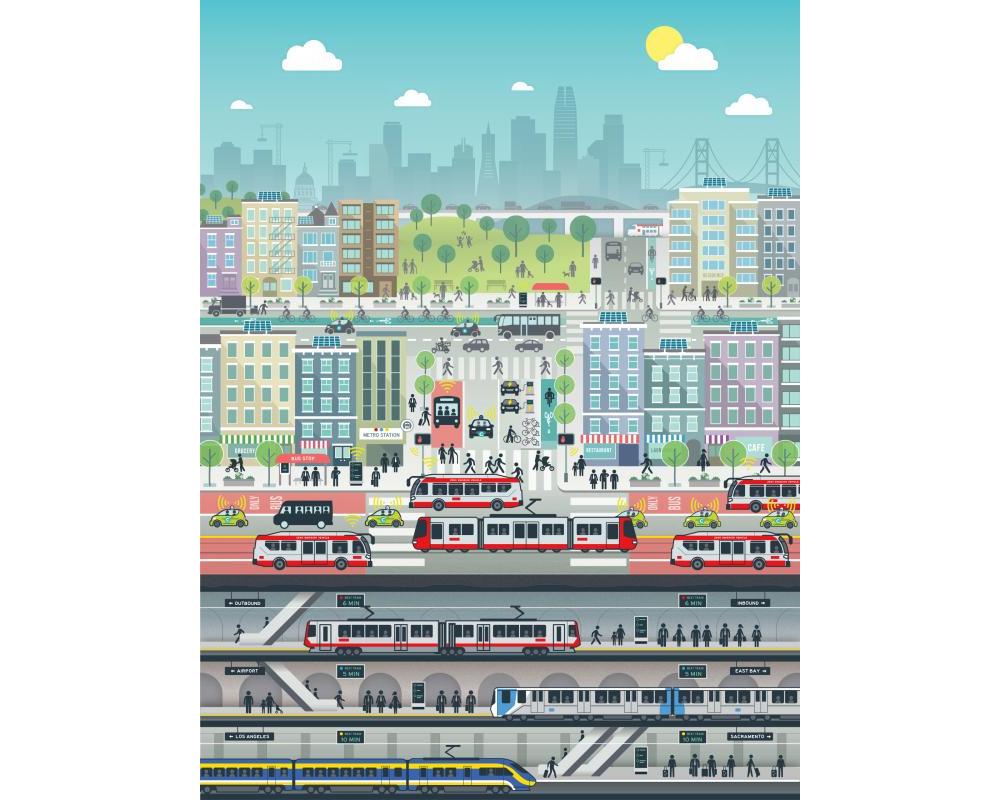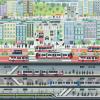
As we emerge from the current pandemic, what does an effective, equitable, and resilient transportation system for San Francisco’s future look like? Last week, just such a forward-looking vision was published by ConnectSF. ConnectSF is comprised of staff from the SFMTA, the San Francisco County Transportation Authority and the San Francisco Planning Department. With input from residents, community and business groups, youth organizations, and other stakeholders, the collaborative’s Transit Investment Strategy lays out a vision for reinvesting in the city’s transit system.
The Vision
ConnectSF is advancing a bold vision for the future of our transportation system. In order to realize this vision, we will need to invest in creating a system that is better than before – faster, more reliable, and more accessible. The investment strategy details the big changes we envision and where we will need funding to achieve them. Transit is essential to keeping the city moving, and a stable, ongoing funding source will be critical for helping San Francisco manage congestion and rebuild its economy.
An Improved Citywide Transit Network
Increasing service and making changes that enable new or better transit options are among ConnectSF’s top investment priorities. Our Muni Forward toolkit already includes a number of proven methods for accomplishing this. Bus lanes, transit signal priority, car-free zones and transit queue jumps are just some examples. The Transit Investment Strategy goes beyond these methods and emphasizes the need to prioritize improvements for riders who depend on transit the most.
Reshaping Transit
The investment strategy also calls for reshaping the way we operate transit in San Francisco. San Franciscans need access to a robust network of frequent buses and trains that take them all throughout the city-- rather than focusing primarily on trips downtown. This will require changes along streets and at intersections so that the only time your bus has to stop is to pick you up and drop you off, not to sit in traffic and wait at lights.
Delivering a modern Muni Metro that residents can rely on also requires the funding necessary to catch up with our backlog of deferred maintenance and to enhance our light rail system – for example, upgrading Muni Metro with a new train control system. In the future, in those areas of the city where no amount of bus improvements will be able to meet the demand, long-term planning will also include major new rail projects.
The Transit Investment Strategy emerged as a key product of the Transit Corridors Study. The Transit Corridors Study, along with the Streets and Freeways Study, will serve to identify projects and policies to be included in the San Francisco Transportation Plan and the updated Transportation Element of the San Francisco General Plan. Rebuilding and advancing our transportation system will take the commitment and involvement of city staff and community stakeholders.
Learn More
Staff is eager to learn what transit improvements are the most important to you and to share their own ideas and proposals. You can engage with ConnectSF at their website, which also offers a short survey at the end for you to provide feedback.
You can also give feedback at an Online Town Hall.
When: Wednesday, April 21, 2021; 5-6pm
What: ConnectSF staff will discuss the transit strategy and answer questions.
How: Sign up at the Zoom meeting registration link. After registering, you will receive a confirmation email containing information about joining the meeting.
ConnectSF’s transit investment strategy is available in the following languages:


Comments are for the English version of this page.